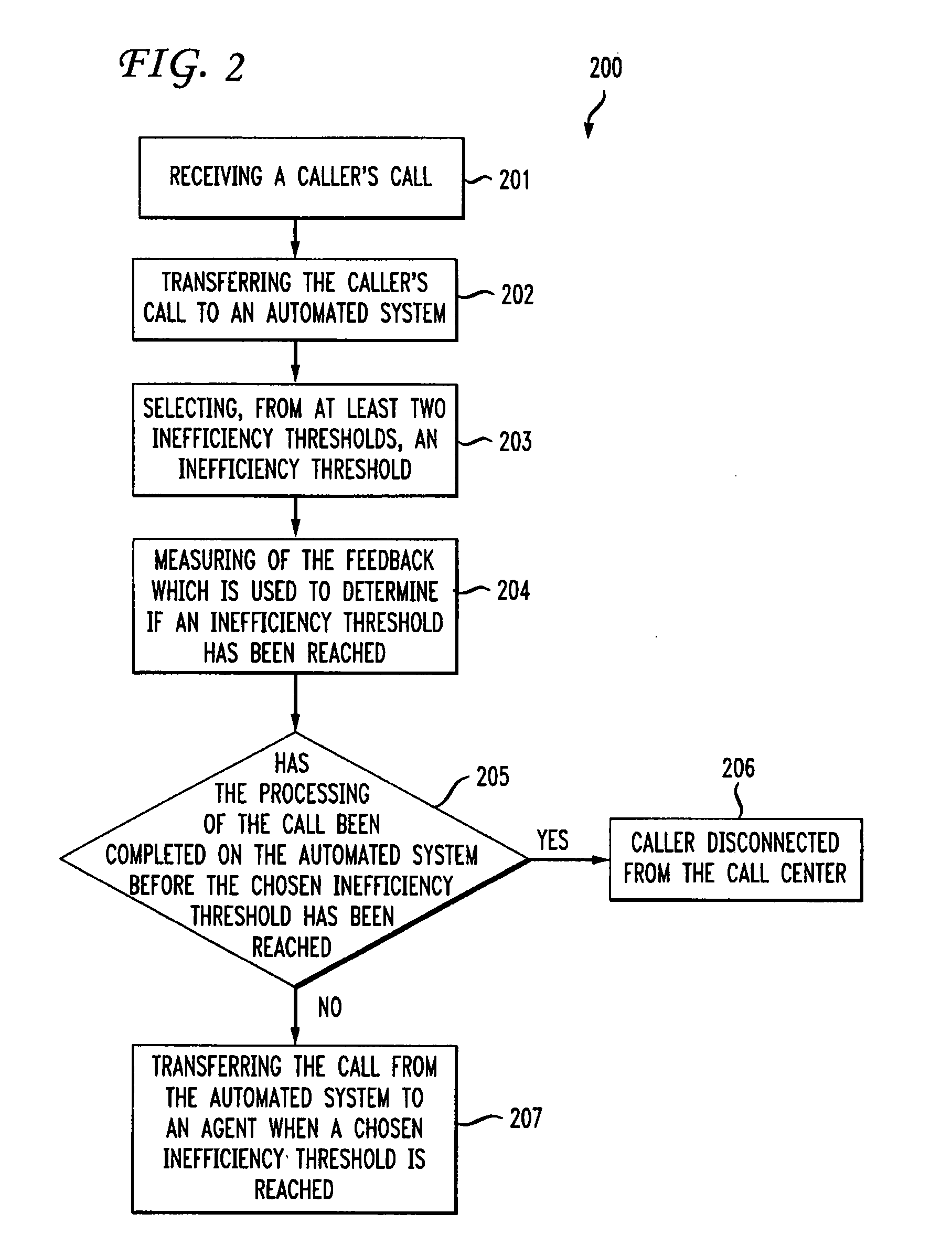Method for Increasing the Efficiency of Automated Telephony Systems
a technology of automated telephony and efficiency, applied in the field of telephony, can solve the problems of caller's inability to respond to the prompts of the automated system, inefficiency metric, and number of callers making mistakes, and achieve the effect of increasing the efficiency of the automated system
- Summary
- Abstract
- Description
- Claims
- Application Information
AI Technical Summary
Benefits of technology
Problems solved by technology
Method used
Image
Examples
Embodiment Construction
[0017]A problem that emerges from the art is that when feedback is measured from a caller using an automated system, only a single inefficiency threshold is used to determine when a caller is having difficulty using the automated system. When this single inefficiency threshold is reached, the call is transferred. Upon transfer of the call, the caller processes their transaction with an agent. Having only a single inefficiency threshold for all situations can lead to any of the following problems: (1) transferring a call too quickly; (2) transferring a call too slowly; and (3) giving a caller the feeling that the call center is unresponsive to his or her needs. Thus, at least one of two main goals of a call center—(1) maximizing the efficient use of the system by the caller, i.e. maximizing the number of calls that are completely processed on the automated system, and (2) assuring customer satisfaction—will likely not be met.
[0018]This problem of call center inefficiency due to a lac...
PUM
 Login to View More
Login to View More Abstract
Description
Claims
Application Information
 Login to View More
Login to View More - R&D
- Intellectual Property
- Life Sciences
- Materials
- Tech Scout
- Unparalleled Data Quality
- Higher Quality Content
- 60% Fewer Hallucinations
Browse by: Latest US Patents, China's latest patents, Technical Efficacy Thesaurus, Application Domain, Technology Topic, Popular Technical Reports.
© 2025 PatSnap. All rights reserved.Legal|Privacy policy|Modern Slavery Act Transparency Statement|Sitemap|About US| Contact US: help@patsnap.com


